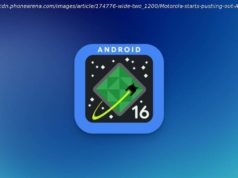Here' s how to watch the Great American Solar Eclipse live on Monday.
One of the most-anticipated celestial events in recent history is just around the corner: On Monday (Aug. 21) , the Great American Solar Eclipse will cast a fascinating darkness over the aptly named „path of totality“ that stretches from Oregon to South Carolina, obscuring the sun’s light as the moon passes between Earth and its closest star.
If you’re not one of the 12 million people who live within the approximately 70-mile-wide (112 kilometers) path of totality, or one of the 1.85 million to 7.4 million people expected to travel to that path, there are still ways to watch the eclipse live. [Total Solar Eclipse 2017: Everything You Need to Know]
NASA will host two live streams: One will follow the eclipse across the U. S.; the other will broadcast from Carbondale, Illinois, a spot that will be in the path of totality for the 2017 eclipse and also the 2024 eclipse. (The livestreams will be launched on Monday, and we’ll feature them here on Live Science.) You can also check the Live Science website and follow @LiveScience on Twitter for photos and around-the-clock coverage of the total solar eclipse.
NASA’s Eclipse Across America live stream will last from 12 p.m. to 4 p.m. EDT. This video will offer fantastic views from 12 locations, including from airplanes, ground telescopes and 57 high-altitude balloons.
To get another perspective, you can view NASA’s Live from Carbondale live stream, which lasts from 11: 45 a.m. to 4: 15 p.m. EDT. Once you tune in, you will be able to watch live coverage of the eclipse, interviews with scientists, telescope feeds and educational activities; you can also participate in social media chats.
For anyone hoping to see the total or a partial eclipse in person, it may help to know when the celestial event will arrive in your neck of the woods. Here are local mid-eclipse times for some of the major cities along the path of totality, according to Eclipse2017.org. If your town isn’t listed, you can use NASA’s interactive map to check it yourself.
And if you’re curious about why the path of totality moves from west to east, how the unusual darkness will affect solar energy, how to explain the eclipse to kids or how ancient people viewed eclipses, we’ve got your back.
REMEMBER to never look directly at the sun during most of an eclipse, or at any other time, without proper protection. Only during the very brief period of totality are you safe to gaze at the sun with the naked eye, because the moon’s shadow has completely blotted out the light. But at all other times, looking directly at the sun can harm your eyes. You must wear solar eclipse viewers; sunglasses won’t do the trick. Here’s a visual step-by-step guide (and a video) for how to make your own viewers.
Original article on Live Science .






